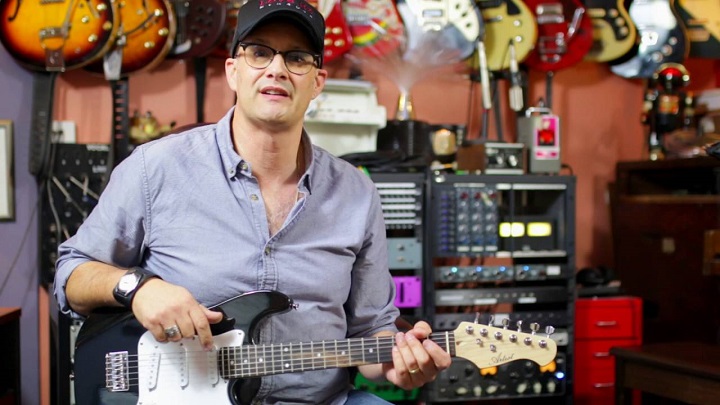Buying a guitar for your child can be the initial step in his/her lifelong journey of inspiration and learning. Also, it can be a confusing process due to the huge range of makes and models on the market. When looking to buy the very first instrument for your little star you will face a lot of choices concerning size or whether it is better to get an electric or acoustic one, new or used?
Luckily, the first dilemma is quite easy to solve – don’t go for a full size guitar for a child. Doing so can prevent the child from being able to hold it properly and learn the chords properly which will descrease te motivation. That being said, get a half-size guitar. What is a half size guitar? As the name implies, half size electric guitar or acoustic type are models that are half the size of a standard guitar. They look and sound the same but their small size makes them perfect for smaller kids so they can hold and play the instrument comfortably.

So, what size guitar is best for beginners? Although the best way to find out is to take the guitar for a spin, still there are some very useful rules of thumb. For example, for kids that are 4-6 years old, the most suitable is a 76cm long guitar. 86cm long guitars are an appropriate choice for ages 6-9 while for kids that are 9 -12 years old you should look for 91cm. Kids over 12 years can play a standard sized guitar.
Half Size Electric Guitar
Out of all guitar types available, electric guitars are definitely the most popular ones used in modern music. They produce a faint sound when played on their own, but once connected to an amplifier they offer a whole new world of different sounds. Electric guitars are used in pop, metal, rock, jazz, blues, R&B and country music. A child size electric guitar would be easier to play compared to a classical or acoustic one. Moreover, these guitars are available in many sizes which makes them suitable for kids of all ages and sizes. They are versatile and capable of producing a range of different tones and along with the use of an amplifier, they can be set to be as soft or loud as desired. One of the drawbacks of this type of guitar is that it requires some additional accessories, like connector cable and amplifier in order to achieve a full sound.

Acoustic Guitar for Kids
These guitars produce rich sound without amplification and are mostly used in genres like country and bluegrass, but you can also hear them in rock, R&B and blues. One of the first questions parents ask is which guitar is the best for a little beginner – acoustic or electric. Although they are the same instrument, the learning concept of both of them is different. An electric guitar for kids may be the best beginner guitar for learning because it’s much easier to play. This is because the strings are easier to press down and the guitar itself has a narrower neck.
The pros of an acoustic guitar are that it doesn’t require amplification, it provides a bright sound that is great for playing chords and it’s a more affordable option since it doesn’t need an amp. However, many models require other additional equipment that needs to be installed. Also, these guitars provide a limited range of tones and sounds and require thicker strings and this is what makes it hard to play for a beginner.
Acoustic-Electric Guitar
This type of guitar combines the benefits of both the acoustic and electric type. Their advantage is that these guitars can be used as an acoustic guitar but when needed, they can be plugged in. Most of them have some level of tone control but they can be a bit expensive.

Source: Joegrushecky
What to Look for When Buying a Guitar
Shopping for an instrument for the first time is not easy, especially when you don’t know what you are looking for. When it comes to buying a guitar for a beginner here are few things you need to consider.
- Is the guitar neck straight – Check the guitar for any bends and curves. The guitar should have a straight neck so it can prevent the strings from hitting the frets. If the guitar has a back bow or bow, this means it can be difficult to play. Ask for professional help. An experienced salesperson can identify potential issues if there are any.
- Are the guitar’s electronics in a good condition – If you are buying an electric guitar, try to plug it into an amp and toggle all the switches. Turn all the knobs a few times and hear if there is any crackling sound. If this happens it means some of the internal electronic parts of the guitar may be a little dirty. This is a fixable problem so there is no room for panic.
Generally, there is a lot to consider when looking to buy the perfect guitar for your kid. However, you can always talk to a professional and ask for more information, advise and help. Stores that are selling instruments have knowledgeable staff that can help you make the more informed decision, even if you are looking for guitar online.